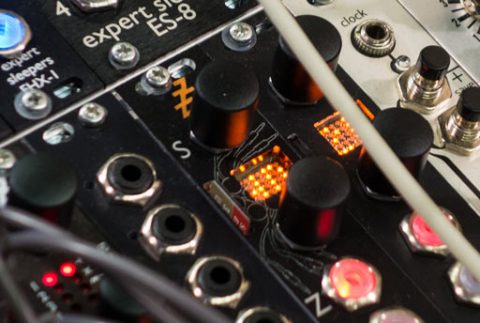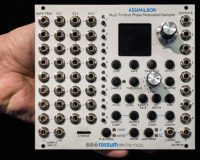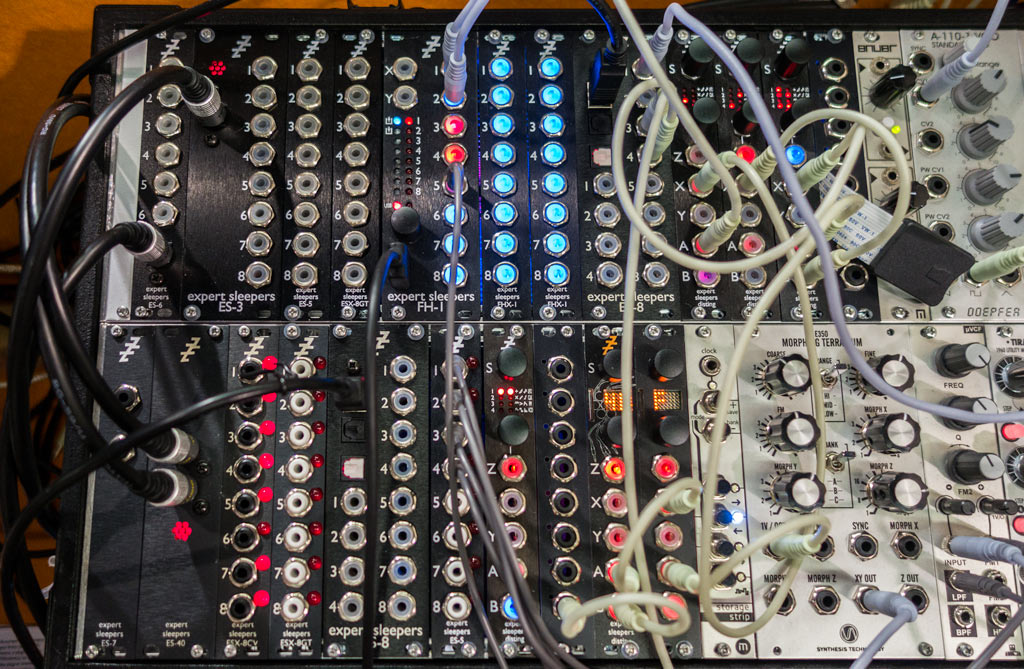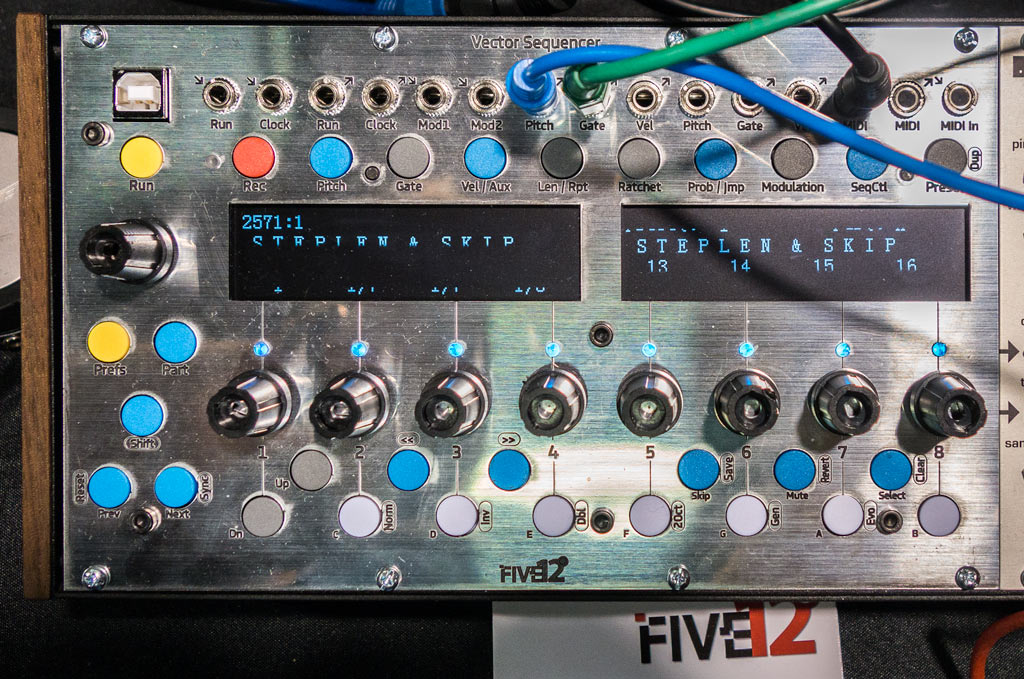I saw modules and spoke with their creators from literally dozens of companies at NAMM this year. I briefly considered copping out and just giving very brief summaries of each in order to get through them all quickly…but that’s not how I’m wired. There are some companies and modules that inevitably have shorter stories than others, but when I’ve learned tidbits I think you’ll find interesting, I want to share them. So look for me to keep adding installments over the next many days as I randomly a grab an hour or two between returning home from NAMM and dealing with other aspects of Life.
Expert Sleepers
When the German retailer SchneidersLaden briefly mentioned an Expert Sleepers Disting mk 4 on their web site, there was debate whether it was a leak or a typo. Turns out, it was indeed an accidental leak: the final mk3 units have been manufactured and shipped; the mk4 is in production now and will ship in March.

In other news, their ES-3 mk4, the ES-5 mk3, the ES-6 mk2 and the ESX-8GT mk3 were all refreshed to have color LEDs around their jacks to match the Disting and ES-8; they are also slightly shallower for mounting in smaller skiffs. And speaking of the ES-8, a firmware update will allow the ES-8 to work in ‘standalone’ mode without a USB connection, meaning it can function as an ADAT-to-audio converter. They also are finishing up Windows drivers for it (the ES-8 had previously been a Mac-only product). All of these updates should roll out in February; the prices will probably remain roughly the same.
Five12
Those who have been following me for a while now have probably picked up on my Berlin School roots. As such, Five12’s Numerology has been on my list of software apps to learn, as it is a very flexible, interactive step sequencing environment. Five12 made news at NAMM by expanding into the hardware realm with their Vector Sequencer (due later this year; price is not set but should be very roughly around $800). A very simple way to think of it is as Numerology in hardware, but that’s too short of a story – it’s actually about creating a sequencer that bridges the software and hardware worlds. It contains two sets of CV/gate outputs as well as two sets of MIDI outputs (requiring 3.5mm to 5-pin DIN adaptors) so external keyboards and sound modules can be controlled alongside a modular system. A USB connector provides the computer connection, including a link to Numerology to exchange pattern data as well as to allow software updates; it also has a (currently internal) MicroSD card slot for sequence storage and recall.
Another bridge between worlds is that the vector sequencer contains knobs per stage for easy, interactive editing, two huge displays, and buttons arranged as a one-octave keyboard. If 8 steps editable at a time plus a one-octave keyboard are not enough, there will be an expansion unit you can add on to edit all 16 stages at once with a two-octave keyboard to play. As it is still under development, specs are fluid, but in general sequences can be up to 16 steps (that number might go up to 32) and four parts per sequence (that number might go up too), with ~100 sequences stored internally at once. There are also subsequences that allow creation of longer forms by transposing the main sequence.
Rossum Electro-Music
As some may know, Dave Rossum was the founder and chief engineer of E-mu Systems. In addition to creating an exceptionally high quality modular synth and the groundbreaking Emulator line of samplers, one of their later products was the rackmount Morpheus, which was a sample playback unit with a very flexible up-to-14-pole filter – actually, a cube with different filter types assigned to each corner – and the ability to choose a mix in one dimension between those filters at the start of each note.
The new Rossum Morpheus Eurorack filter ($499; shipping imminently) is a major update on that original concept. Each of its 288 filter configurations assign different frequency responses to the corners of a cube. 180 of them use all 8 corners; the remaining ones use 4 corners. Thanks to improved processing power (and a new filter topology – more on that in a second), you can move in three dimensional space between those filter configurations in real time under voltage control.
Dave shared some of the details of the DSP implementation of Morpheus with me. In simple terms, the original Morpheus’ filter design had an issue where an important coefficient would sometimes go over the value of 1…and multiplying by a number larger than 1 creates the equivalent runaway feedback. They did what they could to limit those cases, but there were still times – Dave estimates it was about once every two weeks under normal conditions – where the filter would start to run away, so the unit would pre-emptively mute that note. Synthesis pioneers Max Mathews and Dana Massie had since created a “phasor filter” design, which uses a polar plot of complex numbers to ensure the amplitude does not run away. Dave expanded on that initial research in creating the new filter design in the Morpheus module. For those who may think “too bad – that must mean it won’t distort,” there indeed is saturation inside Morpheus, which Dave explained is woven throughout the filter calculations including during morphing rather than being a separate processing stage. The results I’ve heard in demos so far have been very smooth and musical.

Hi-Fi versus Lo-Fi
Dave Rossum’s meticulous attention to detail and sound quality is at one end of the scale; at the other end are those who enjoy exploiting lo-fi artifacts of primitive analog and digital designs and implementations. In that vein, the next installment will include Catalyst Audio’s recreations of Buchla 100-series modules complete with original circuits and through-hole components (pictured above), as well as Soulsby Synthesizers’ wonderfully raw 8-bit Oscitron sound module.




